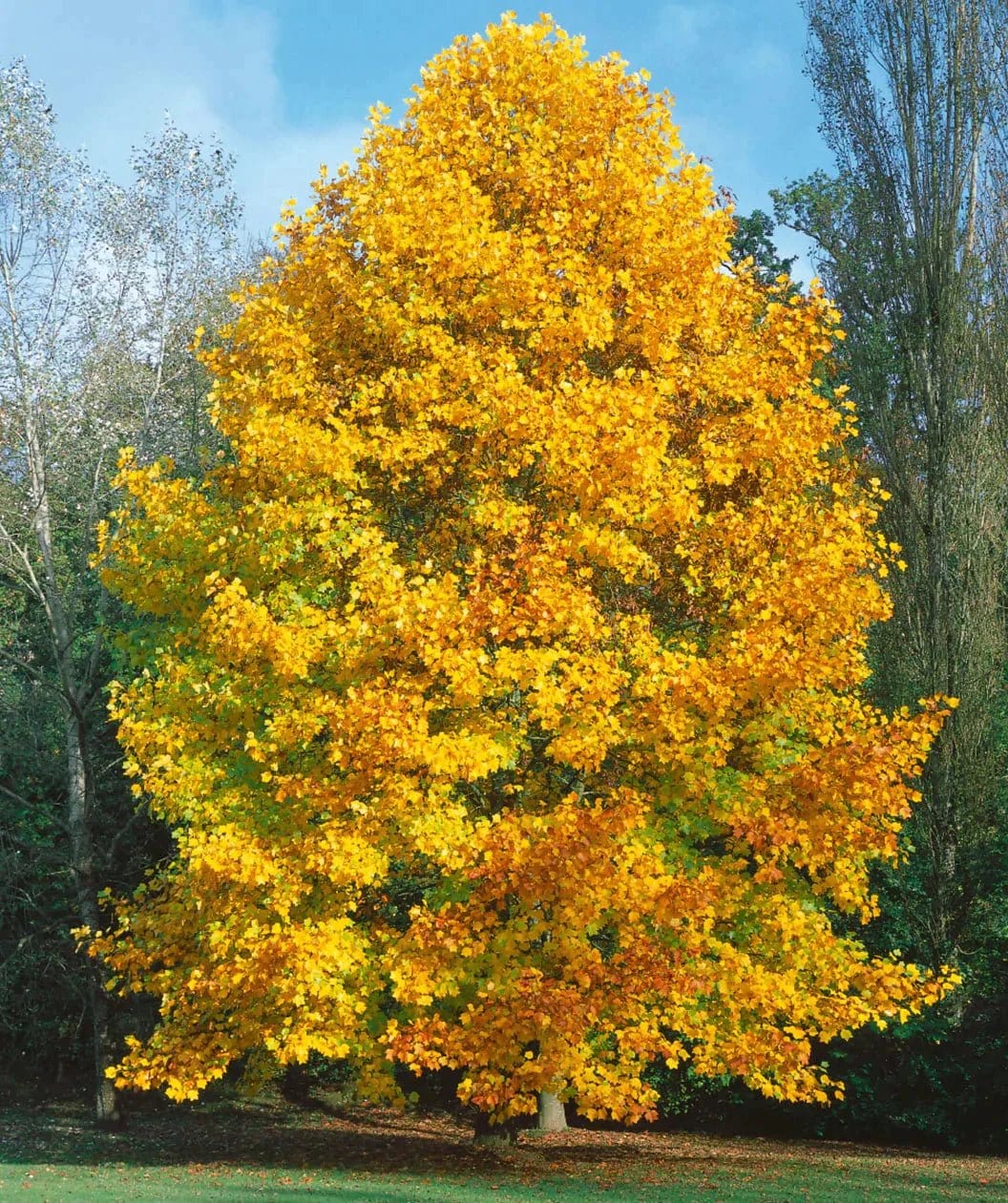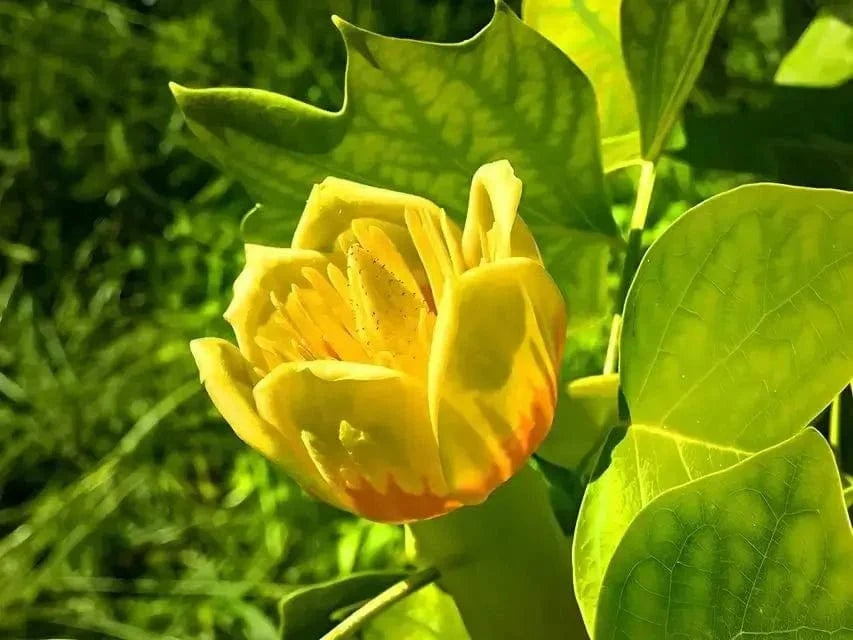Tulip Tree
Tulip Tree
Couldn't load pickup availability
Ships November 2025
OH.CT.
Tulip Tree
The Tulip Tree, known as Liriodendron tulipifera, is a majestic tree native to North America. It can reach 100 feet in height and is recognized by its tulip-shaped flowers and distinct leaves.
Tulip Tree's Appearance
The tree is a sight with its tall and straight trunk, reaching towards the sky. Its branches spread wide, forming a conical crown that provides a natural shade. The tree's most striking feature is its flowers. The tulip-shaped flowers are large and showy, with yellow and orange markings, adding charm to the tree.
The Versatile Tree's Use
The tree is versatile and can be planted in various settings, including urban areas, parks, and gardens. It is also an excellent choice for more significant landscapes, as it can provide a focal point and natural shade. The tree can grow in various soils and is low-maintenance, making it ideal for those who want a beautiful tree without much effort.
Environmental Benefits Of The Tree
The tree provides numerous environmental benefits, making it an excellent choice for sustainable landscaping. It helps to reduce air pollution by absorbing pollutants from the air. It also provides a habitat for birds and other wildlife and helps to maintain soil health.
This Tree's Lifespan
The tree is a long-lived tree with a lifespan of up to 300 years. This means that generations can enjoy it, making it an excellent investment for any landscape. Its solid and durable wood is also prized for its use in furniture and construction. The tree is stunning and versatile, perfect for any landscape. Its showy flowers, low-maintenance nature, and environmental benefits make it an excellent choice for sustainable landscaping. With a long lifespan, it is also a worthy investment that can be enjoyed for generations.
Several names, including yellow poplar and fiddle tree, are called for the tree. However, it is not a true poplar; it is a member of the magnolia family. Its name may refer to its lobed leaves, which resemble the shape of tulip blossoms, or its distinctive flowers.
The Tree is Covered in Unusual Blooms in May and June
These flowers are 1½ to 2 inches in diameter and are yellow-green, with a hint of orange at the base. The fragrant flowers waft scent throughout the yard and attract hummingbirds. After the flowers fade, the tree is covered in colorful seeds. These seeds, lasting into winter, provide food that attracts finches, cardinals, and other birds, as well as small mammals such as mice, squirrels, and chipmunks.
Then, in fall, the leaves turn a brilliant yellow, providing a shimmering spot of vibrant color to any yard. Suitable for Zones 4-9, it is hardy to temperatures of -20°F. The tree is fast growing, increasing in height by up to two feet a year until it reaches a mature height of around 70 feet. At times, though, these trees can be much taller, such as those planted by George Washington at his home, Mount Vernon, where they reach 140 feet.
Another advantage of the Tree is its Longevity
The Tulip tree thrives in full sun but can tolerate some shade. Ideally, it should receive at least six hours of unfiltered sunlight daily. While drought takes humid conditions, the tulip polar prefers average moisture. It grows in sandy to clay and moist to well-drained acidic and loamy soils.
The tree reaches a width of 40 feet, and its oval-shaped canopy provides shade. This shade, as well as its color and blooms, make the tree a welcome addition.
This Is How Your Plants Will Look upon Delivery
Shipping date depends on the date displayed and chosen when you order from the product's page.
We only accept returns on plants verified dead. If you think your plants have died, we offer a 1 year warranty, please use use this File a Claim Link to verify dead plants and start with return warranty process.




